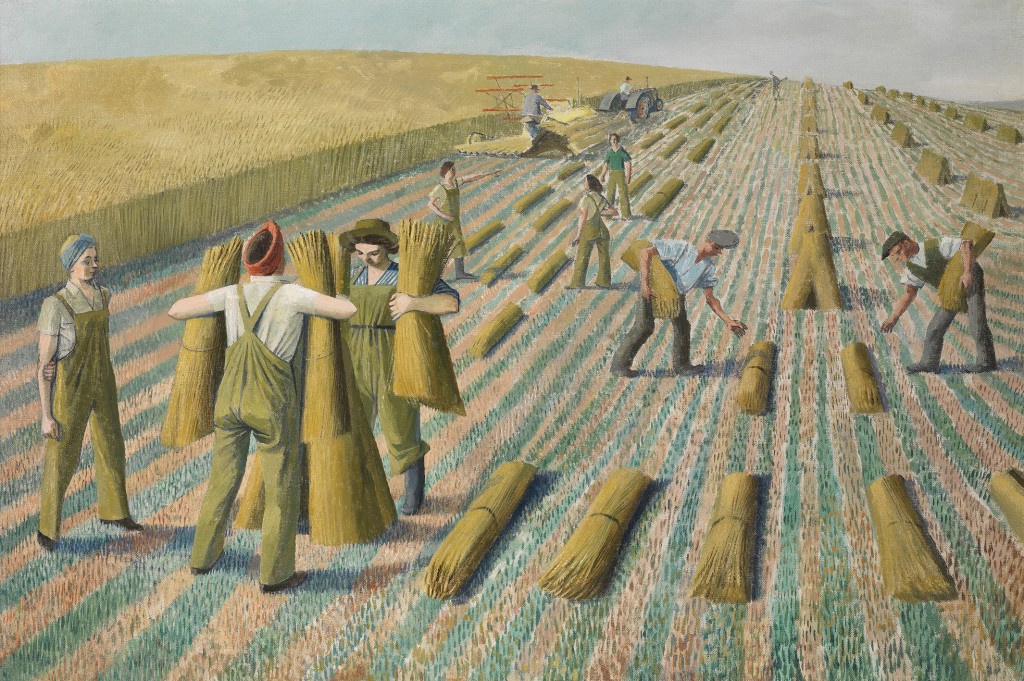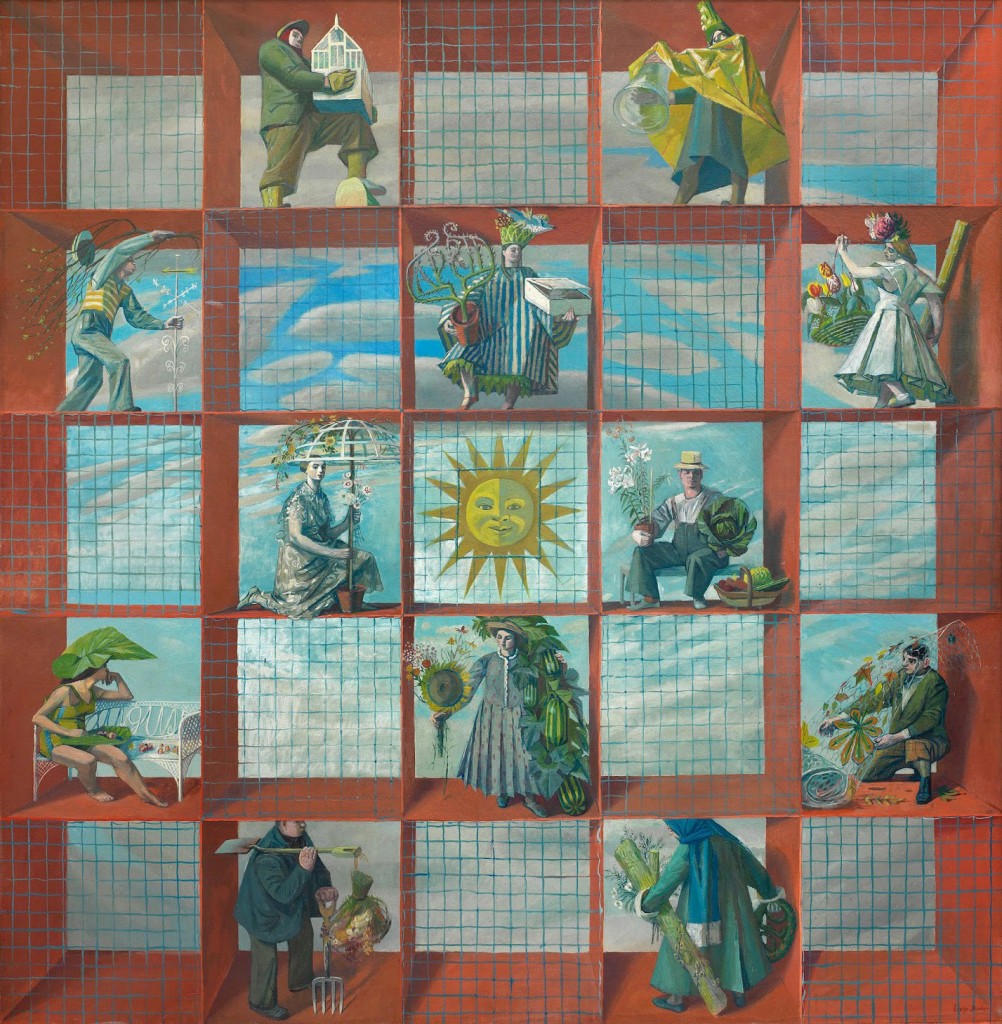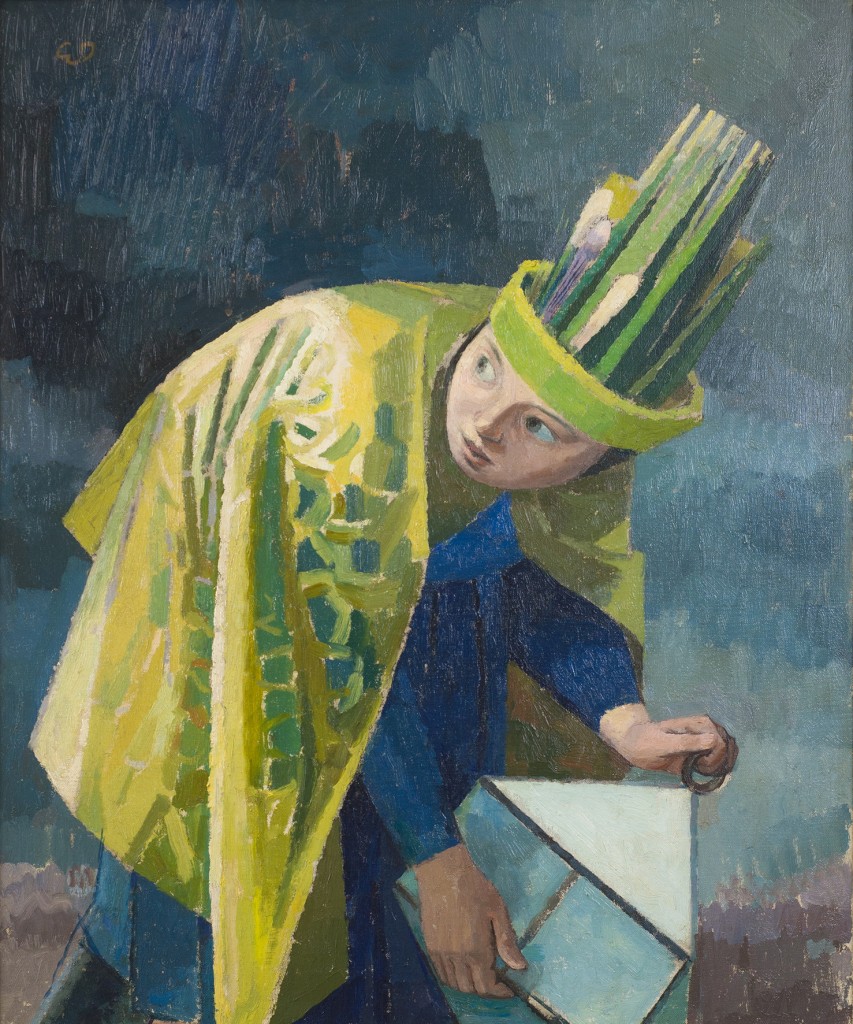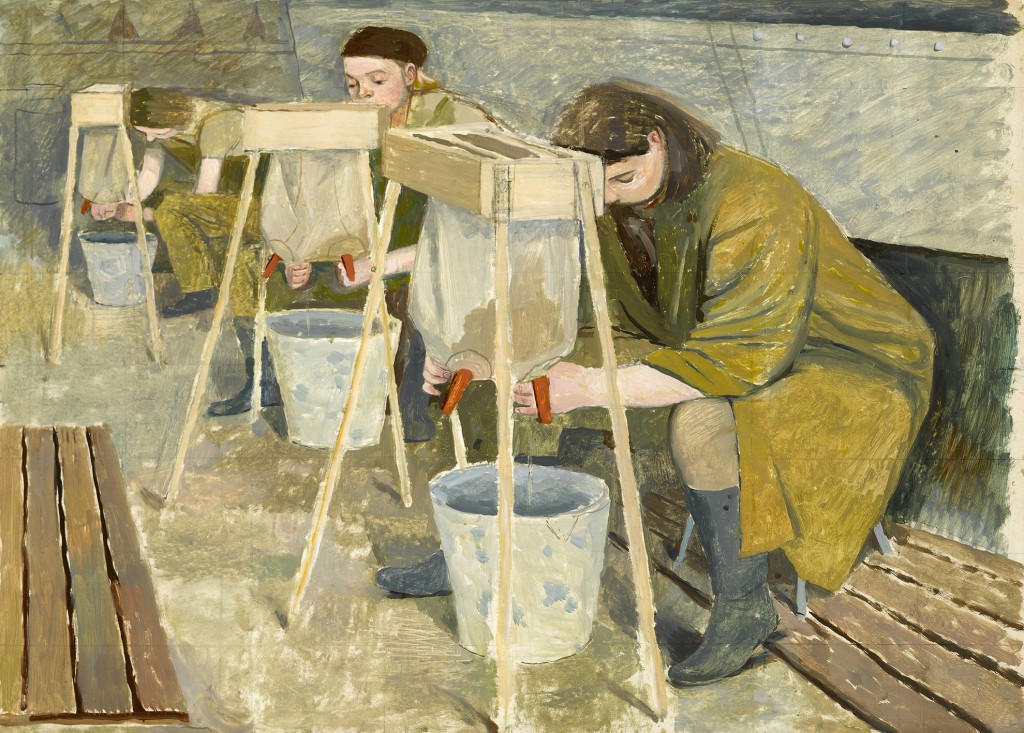
The current exhibition, ‘Evelyn Dunbar: The Lost Works’, at Pallant House Gallery, Chichester, includes many previously unseen pictures by this lesser known artist. Many of these paintings and drawings had lain forgotten in an attic in Kent until their rediscovery in 2013.
Evelyn Dunbar’s recurrent themes of the repeating rhythms of nature, the seasons and the year seem particularly poignant as we once again reflect on the coming of a New Year.

These themes are reflected in ‘An English Calendar’ painted in 1938. Here we also observe the artist’s passion for horticulture. Dunbar’s figurative study ‘February’ is filled with allegory. It is as though this figure has been disturbed. Her startled face is illuminated as she lifts a cloche and the first shoots of spring issue from her hat against the cold grey of a February sky. It displays something of the graphic qualities present in the artist’s illustrations.

The exhibition is being held in the early 18th century house which forms part of the gallery. The influences of the 1930s British art scene on Evelyn Dunbar’s work is immediately apparent. There is something of the attitude of Stanley Spencer, Paul Nash, Graham Sutherland and others in her pictures which connects her work to the Neo-Romantic movement of the time. Nevertheless there is much to delight in the familiar.
Amongst the strongest images in this exhibition are her depictions of the home front painted whilst she was working as a war artist. Dunbar was appointed as an Official War Artist in April 1940.
Sir Kenneth Clark provided the inspiration to set up the ambitious Recording Britain scheme which he saw as an extension of the Official War Artist Scheme. Artists, like Dunbar, were employed on the home front to create topographical views of the British landscape, architecture and people. These things were being threatened by bombing and possible Nazi invasion and were rightly considered to be important to the British nation and her identity.

There is a poetry and rhythm in Evelyn Dunbar’s paintings from 1940 of ‘Men Stooking and Girls Learning to Stook’ and ‘Milking Practice with Artificial Udders’. These stylized depictions display Dunbar’s empathy with her subjects and love of the English landscape. Her palette and the texture inherent in her handling of paint adds a vitality to her work.
This charming exhibition runs until 14th February 2016 at the Pallant House Gallery, 9 North Pallant, Chichester, PO19 1TJ. For more information about ‘Evelyn Dunbar: The Lost Works’ and the gallery’s current exhibition program go to www.pallant.org.uk or telephone 01243 774557.
I wish you all a peaceful and happy new year filled with blessing.
By Revd. Rupert Toovey. Originally published on 30th December 2015 in the West Sussex Gazette.